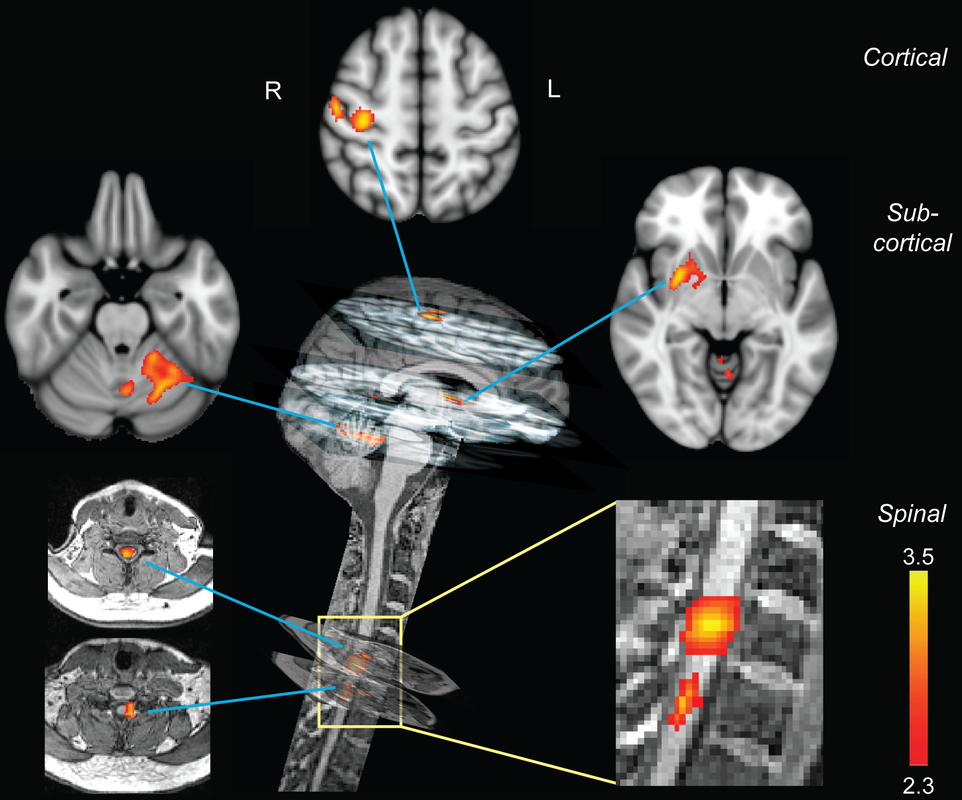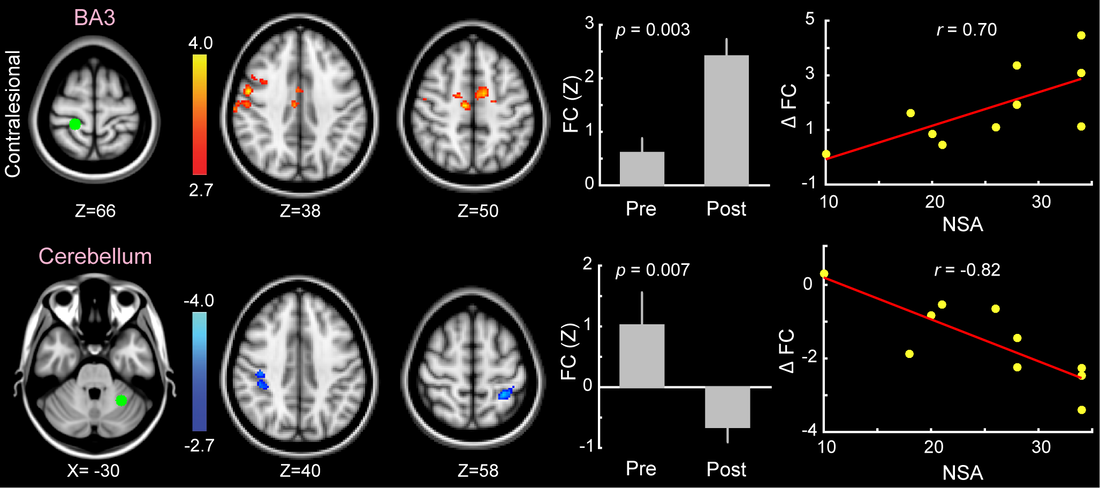|
1. Our lab is particularly interested in the role of spinal cord in sensorimotor learning and recovery from movement disorders and disabilities. We are actively involved in developing novel neuroimaging techniques using simultaneous functional MRI of the brain and spinal cord. We have provided neuroimaging evidence for local spinal cord plasticity during motor skill learning in humans. We study resting-state networks at the brain and spinal cord levels and how they are altered by motor learning and recovery processes. |
Optogenetic-fMRI to study motor learning and stroke recovery
The combination of optogenetics tools with functional MRI allows causal investigation of neural interactions at a systems-level, and complements human models by providing a cell-type specific examination of the underlying neural circuits. Our lab uses optogenetic-fMRI techniques in conjunction with experimental models of motor learning and ischemic stroke in rodents to study changes in circuit dynamics involved in motor learning and stroke recovery.



